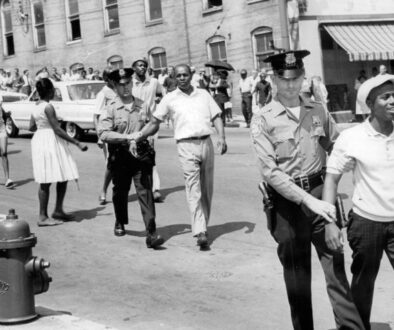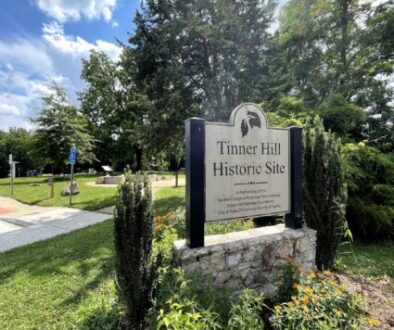Shenandoah National Park cabins: Segregation at Lewis Mountain
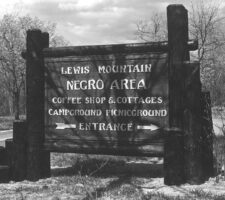
Every year, millions visit Virginia’s famed Shenandoah National Park, drawn by endless mountain views, waterfall hikes and the spectacular fall colors of the Blue Ridge Mountains. As visitors travel along Skyline Drive, the park’s main road, they’ll pass a routed wood sign pointing to Lewis Mountain.
In the 1940s, the park marker included an additional line: “Negro Area.”
These Shenandoah National Park cabins, the only purpose-built segregated camping area in the southern national parks, are easily overlooked. The Shenandoah Valley Black Heritage Project is working to preserve its memory, interviewing elderly residents who played and worked there, and bringing their story to a new generation.
“So many people don’t know,” said Elaine Taylor Blakey, 81, who grew up in nearby Luray, Virginia, and attended Sunday school picnics at the site as a young girl.
Even though Lewis Mountain, site of Shenandoah National Park’s cabins, was built for racist reasons, it became a refuge for African American families.
Shenandoah National Park cabins
The site was included in the Green Book, an annual guide listing restaurants, resorts and businesses across the country that welcomed Black travelers. The campground attracted church groups from Washington, D.C., 120 miles away, and vacationers from across the East Coast. It also hosted President Harry Truman who twice came to dine with an influential Black newspaper editor from his home state of Missouri, and with Benjamin Oliver Davis Sr., the first Black army general.
Blakey said that as a young girl she never asked why her family visited this one park area. “I am more upset about it now that I’m older and think about,” said the retired banker, who grew up in the region, moved away for school and career, and returned for retirement.
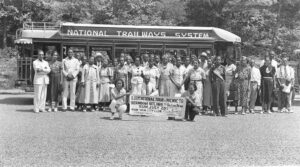
As a national park, Shenandoah, should have been fully integrated, some government officials argued at the time. But state leaders insisted that Virginia’s Jim Crow laws applied even on federal property. The park’s few Black visitors had to eat in the staff area of its white-only restaurants. Most bathrooms, picnic sites, and camping areas were off-limits.
So Lewis Mountain began as an uncomfortable compromise, a way to serve Black visitors and still abide by state law. Built by the same Civilian Conservation Corps workers who constructed facilities, trails, and more for the rest of Shenandoah, it resembled other national park areas, using local stone and materials. It opened in 1939 with 40 picnic tables, 12 fireplaces, 30 tent and trailer spaces, and a bathroom.
In its first year, it welcomed about 9,300 visitors. The next year, it was more than 10,000. Even so, that amounted to just one percent of all park visitors, a figure that remained the same in 2011, according to according to a park study.
The history is today recalled in a marker set among the RV sites at Lewis Mountain and in an exhibit at the park’s Harry F. Byrd, Sr. Visitor Center, named for Virginia’s segregationist U.S. senator who played a key role in having the park constructed. Byrd also famously advocated for “massive resistance” to school integration, which led to the closing of schools in Prince Edward County, Virginia.

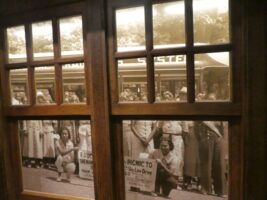
Despite its separate status, by all accounts, Lewis Mountain was beloved by those who spend time there. It soon added rental cabins, which can be rented today, and a dining lodge, where big bands played on weekends.
“Everyone had fun, enjoyed the scenery and each other,” said Lloyd Tutt, the lodge chef and manager for 12 years, in a 1978 oral history of the park. “Tired people … left there relaxed and happy.”
Best food in the park
The lodge served what was widely considered the best food in the park. Tutt and his wife Mittie, a pastry chef, were known throughout the Shenandoah Valley for their cooking, says Blakey who is related to them by marriage. “He was really a legend on the mountain. They did the fried chicken, and the mac and cheese, the potato salad, all sorts of pies and cake. The good Southern dishes.”
Tutt said although he was told to turn whites away, they still came: “Our food was that good.” He said he did his best to keep the races separate by seating them at different tables.
Federal efforts to end park segregation accelerated after World War II, and Lewis Mountain finally integrated in 1951, more than a decade before the color barrier was, officially at least, dropped elsewhere in the South. It maintained its popularity with Black visitors through the 1950s.
Robin Lyttle, president of the Shenandoah Valley Black Heritage Project, says that older residents have fond memories. “You mention the name Lewis Mountain and people smile,” she says.
The park itself applauds the effort, says superintendent Patrick M. Kennedy. “We are pleased to collaborate with the Shenandoah Valley Black Heritage Project in our ongoing efforts to learn about and tell the stories of Lewis Mountain, and the people who worked and recreated there.”
All this was new to Brianna Madden-Olivares, a 20-year-old intern with the history group. Although she attended high school in nearby Harrisonburg, she didn’t know about Lewis Mountain. “Even my Dad had never heard of it,” she says.
She says the campground, though small, is important. “Black history should be more than slavery and sadness and despair,” she explains. “We were able to gather around and have time together in a place where we could go safely and enjoy. We survived because of places like these.
Guidebook
Lewis Mountain campground is located at mile 57.5 of Skyline Drive, the main road through Shenandoah National Park. It’s closest to the Swift Run Gap Entrance Station, which is about 10 miles south. of the campground.
(There are four entrance gates to the park, and they start at mile 0 in the north at the Front Royal Entrance Station, and end in the south at mile 105 at the Rockfish Gap Entrance Station. )
Download a park brochure and map in English here. Other languages available here.
Today, the Lewis Mountain campground has picnic areas, RV camping and rental cabins. Make sure to look for the historic park at the entrance to the RV area.
The Bearfence Trail, a fun rock-scramble hike of about a mile, is located just north of the campground. You can walk about a mile to the trailhead, or park at trail lot off Skyline Drive.
Lodging
In the park, you can rent a cabin or camping site at Lewis Mountain, or stay at Skyland or Big Meadows Lodge. All reservations can be made here.
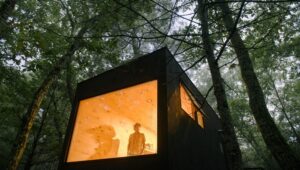
Outside the park, you can spend the night in a cute Tiny House at Getaway, a 20-acre glamping resort.
In the Tutt’s hometown, Luray, rent a room at Darryl Haley Bed and Breakfast, owned by the former New England Patriot.


